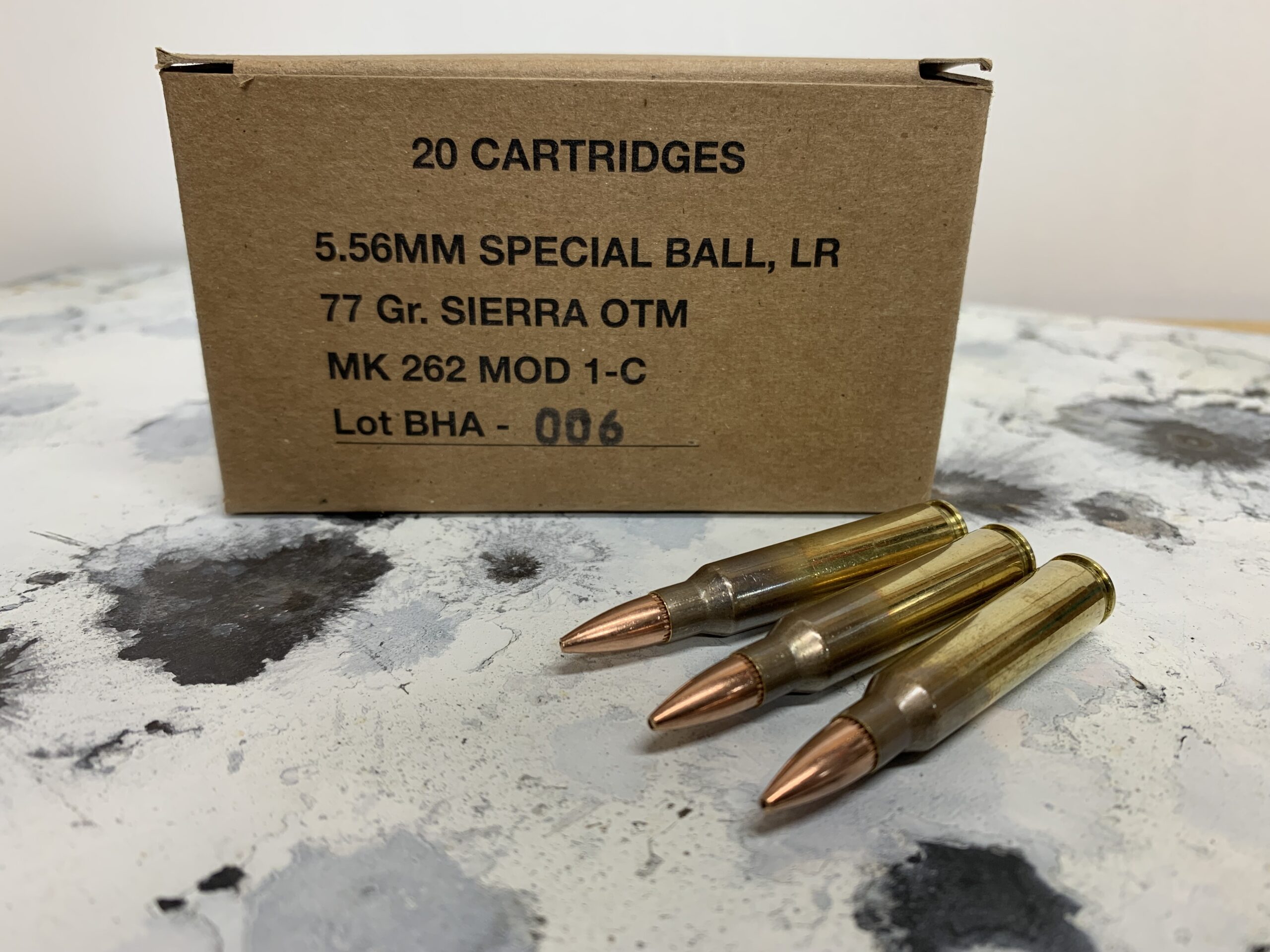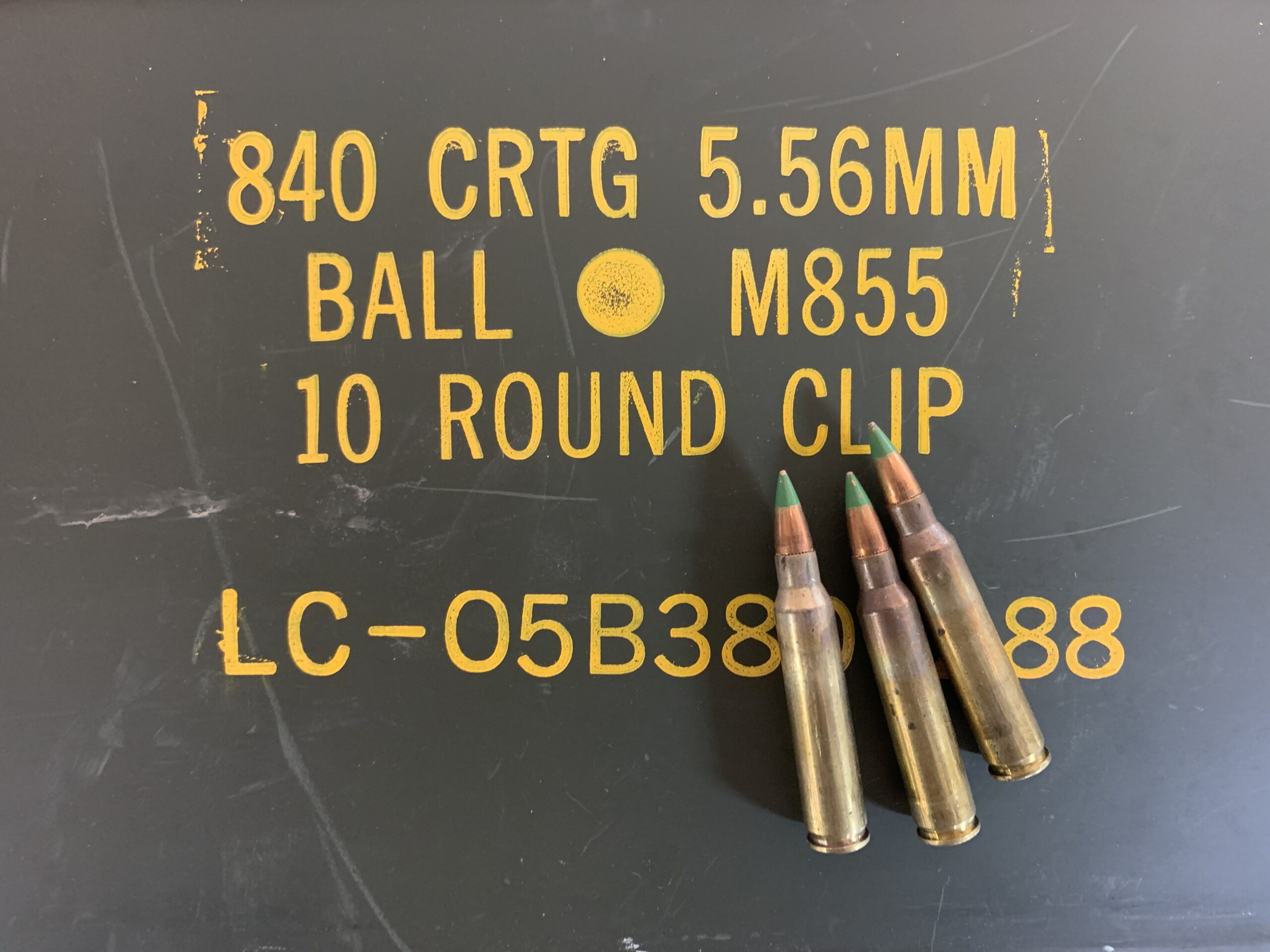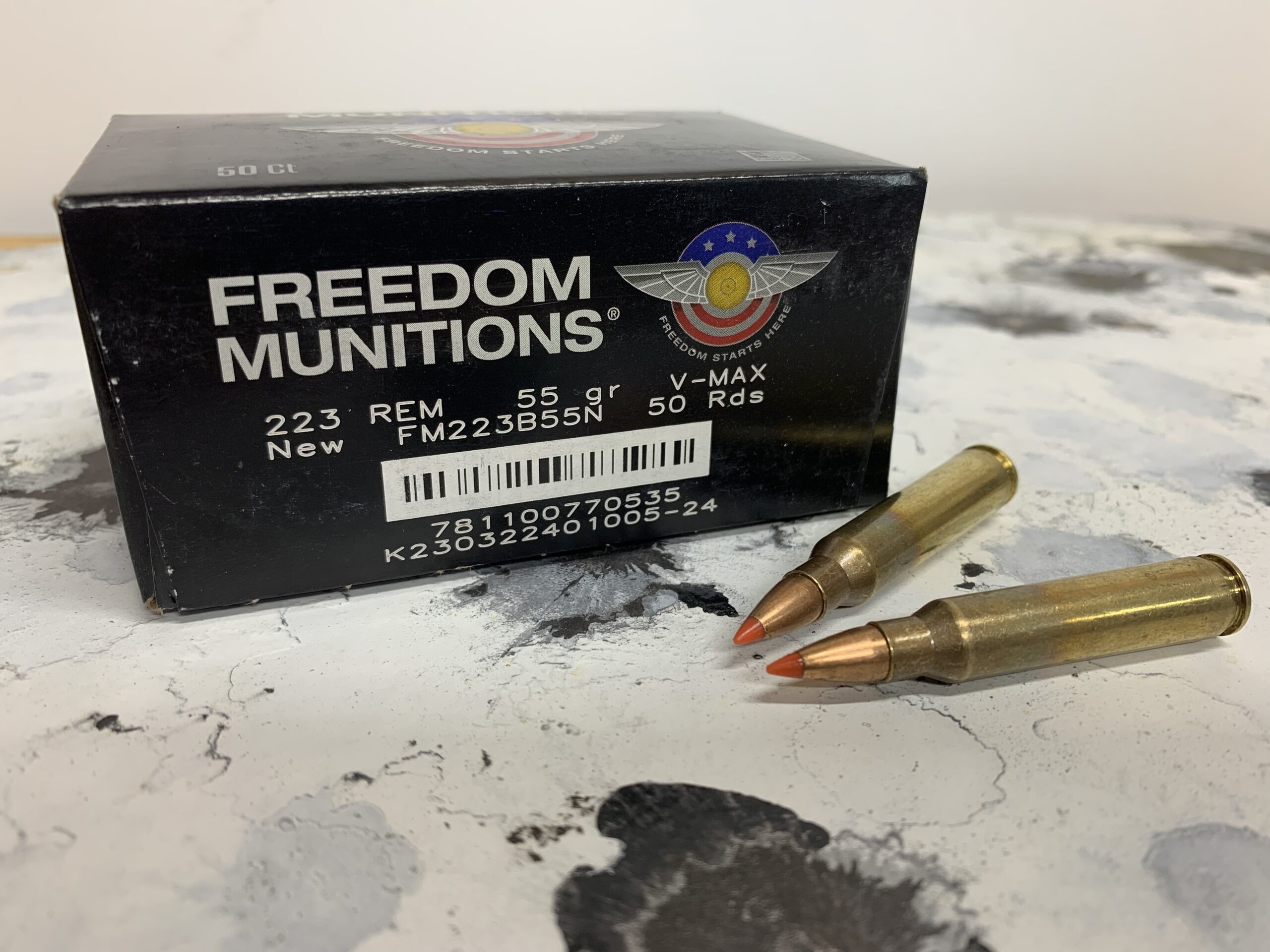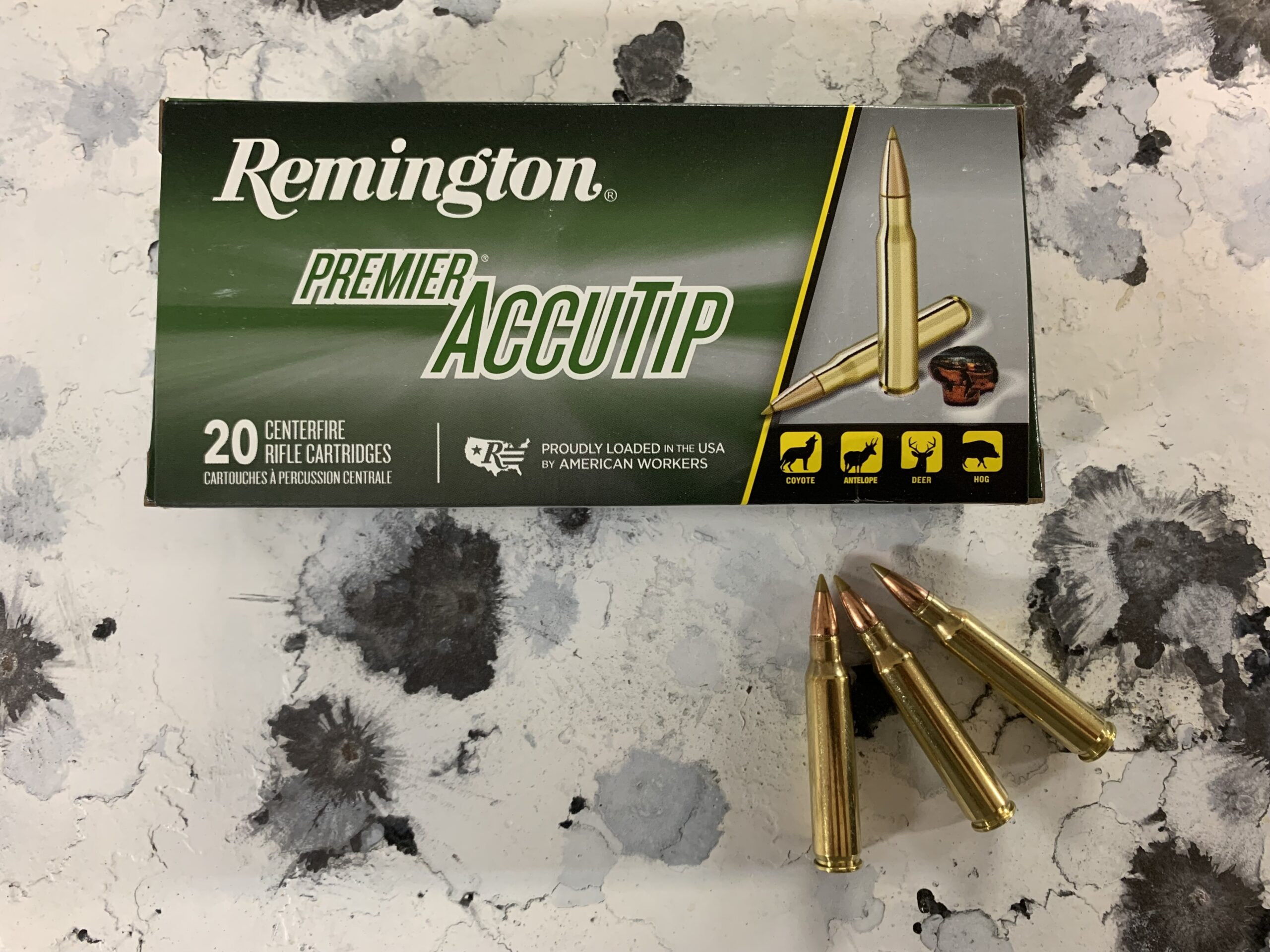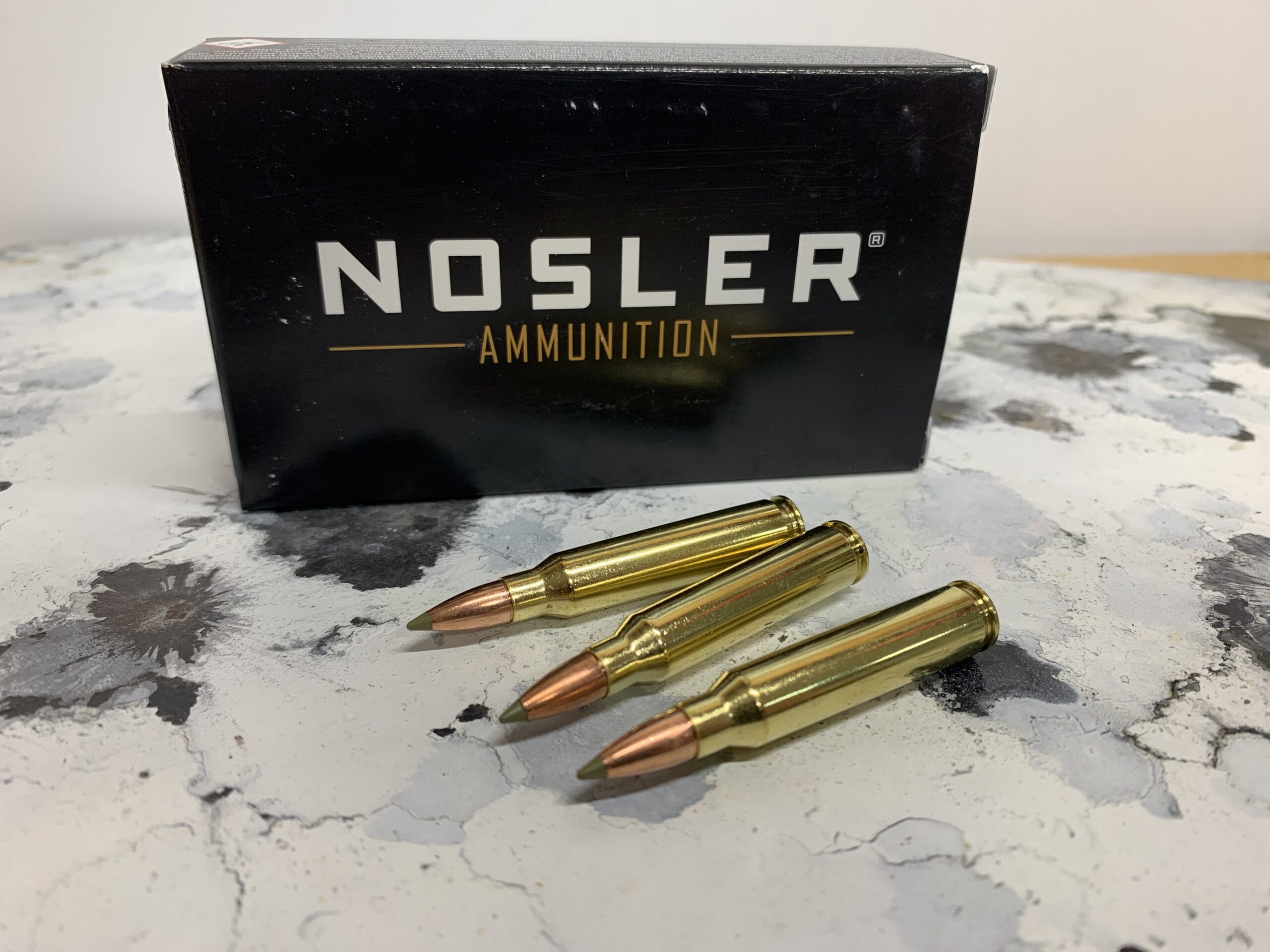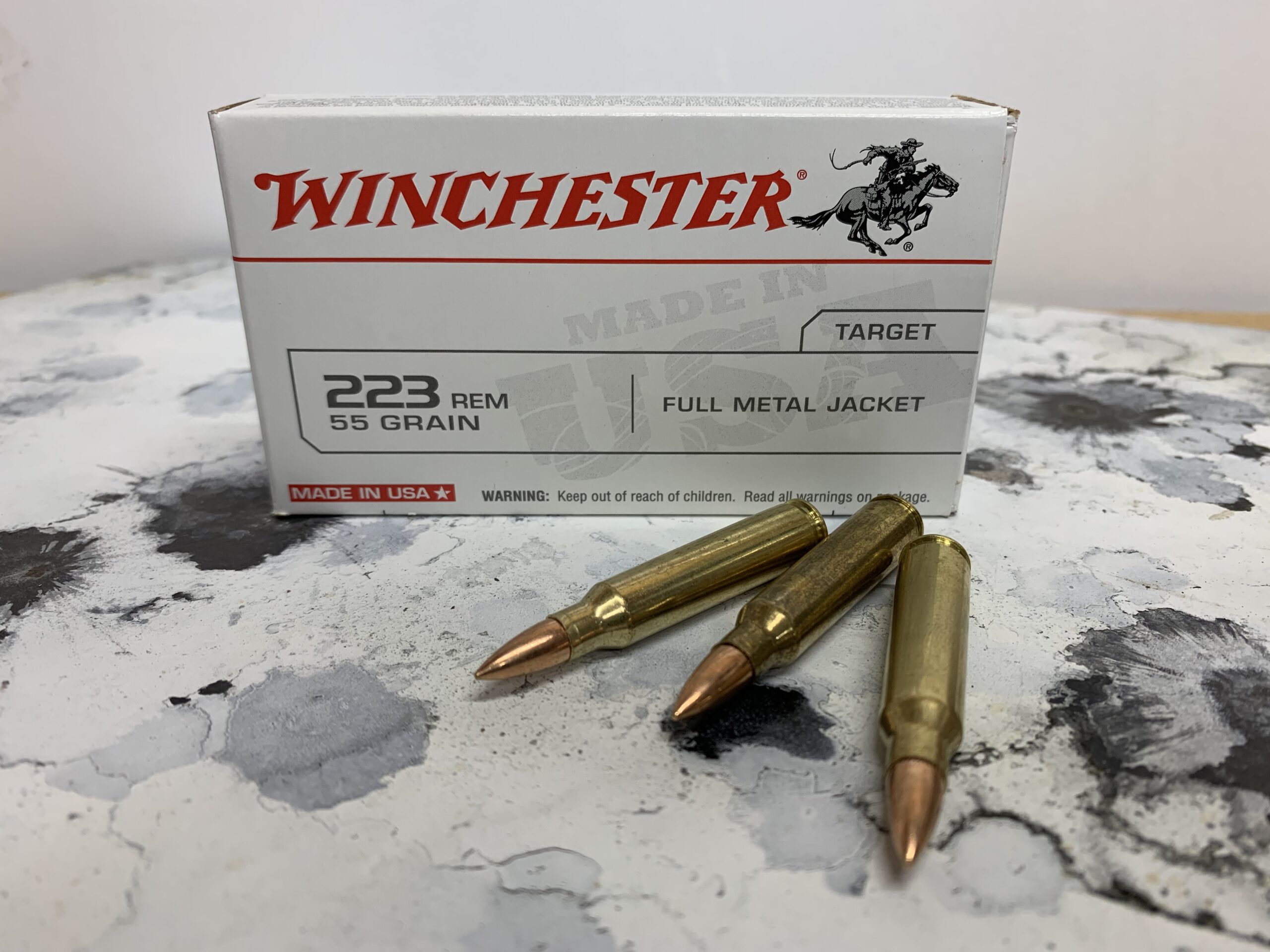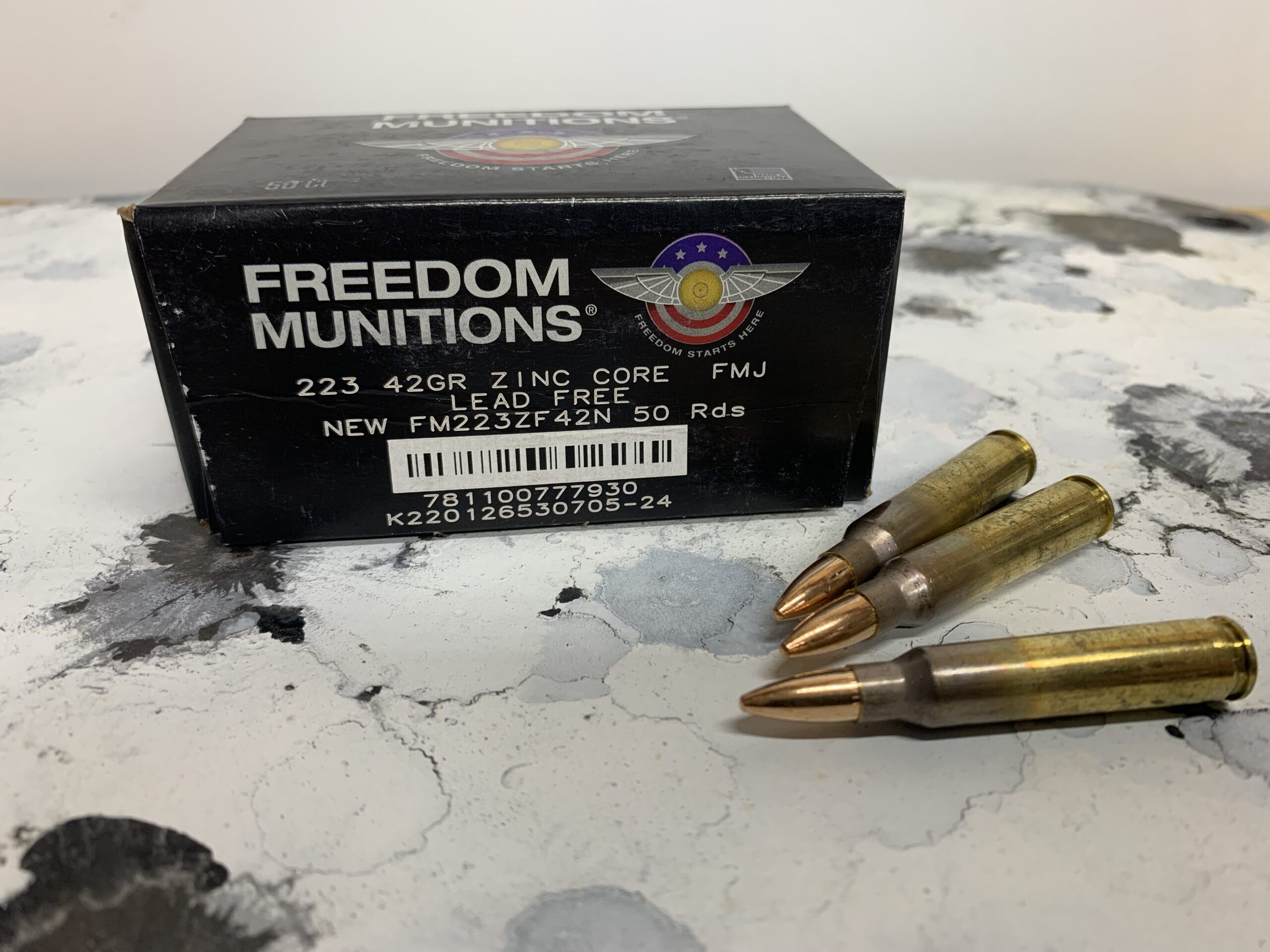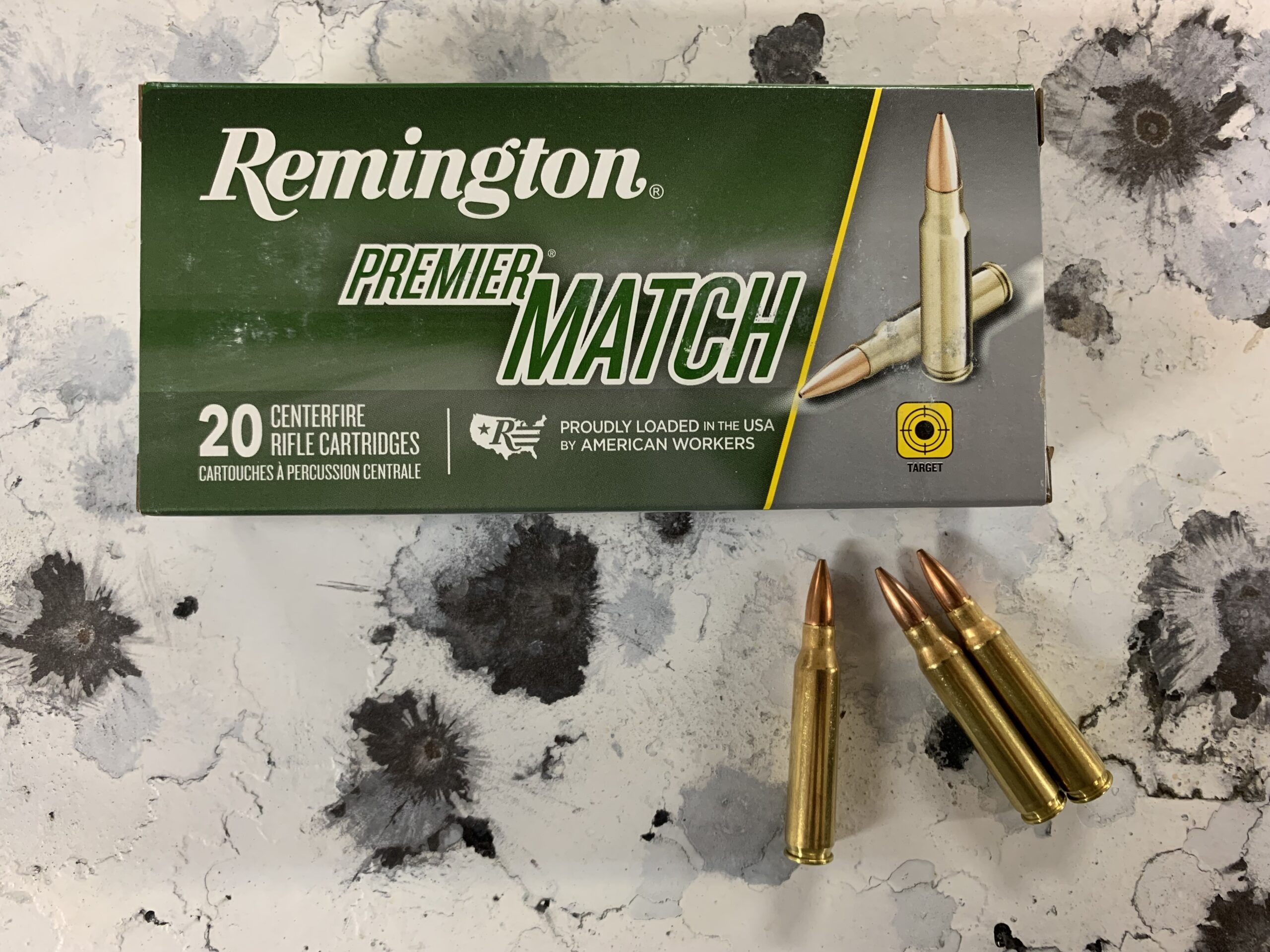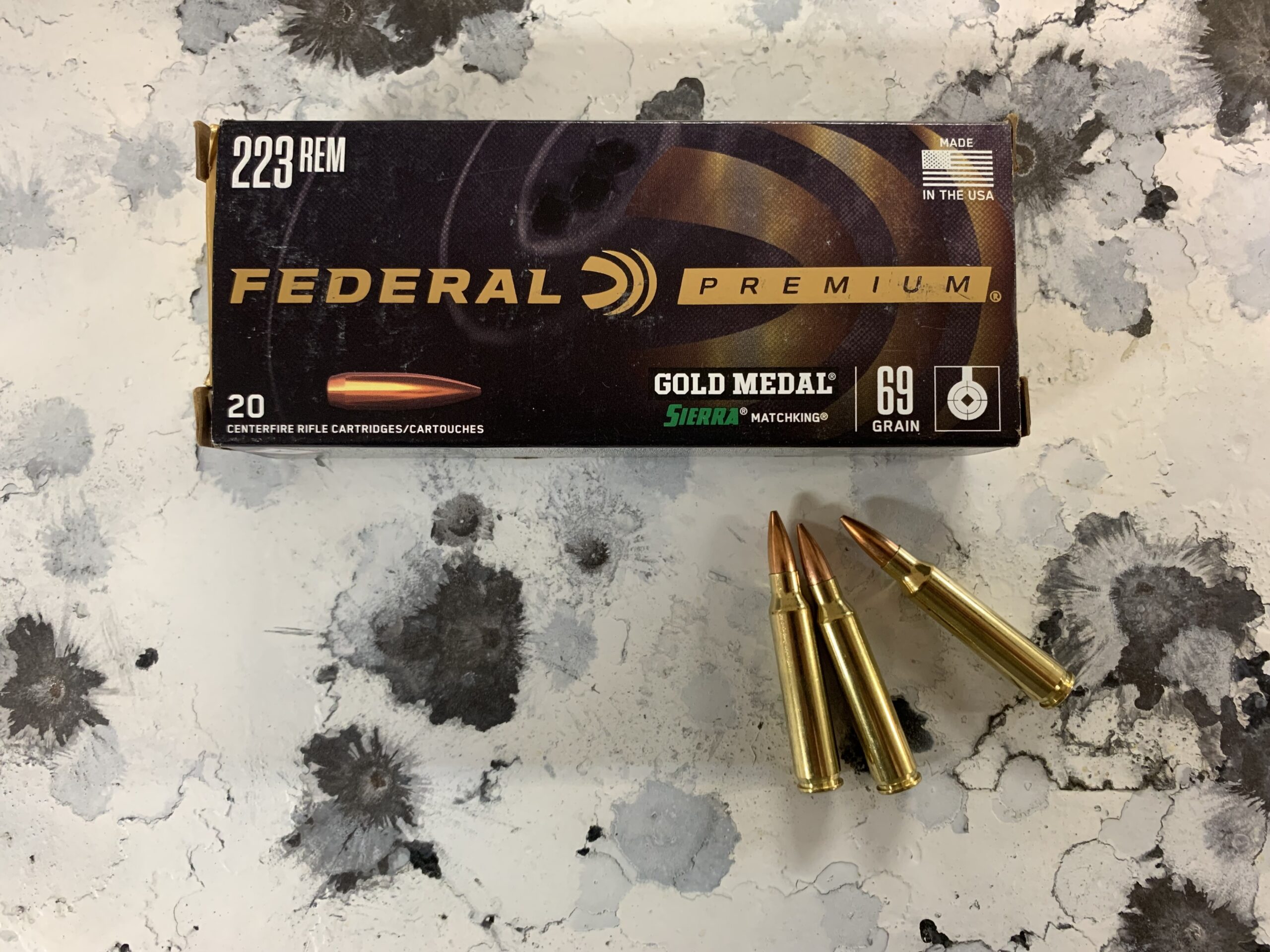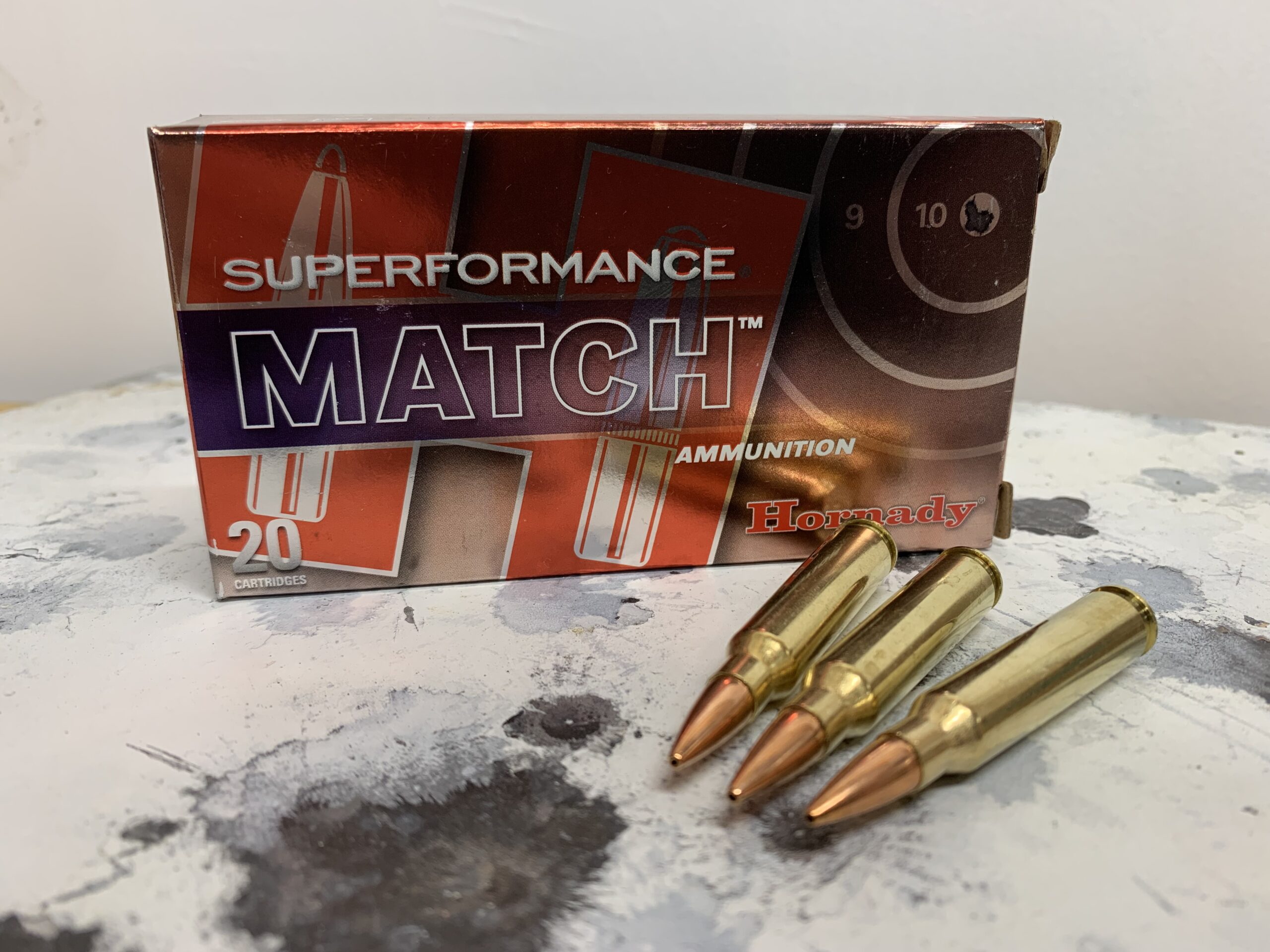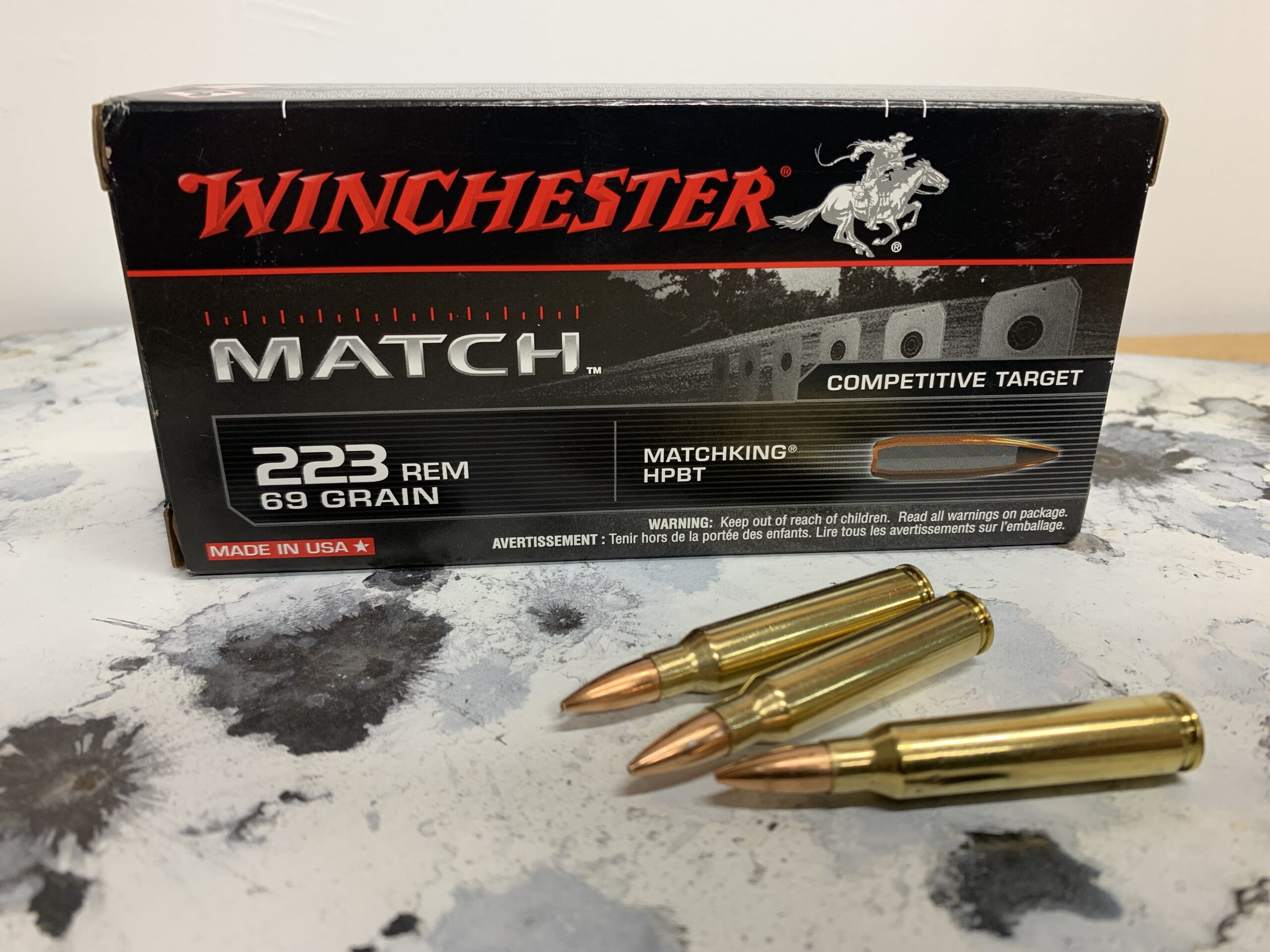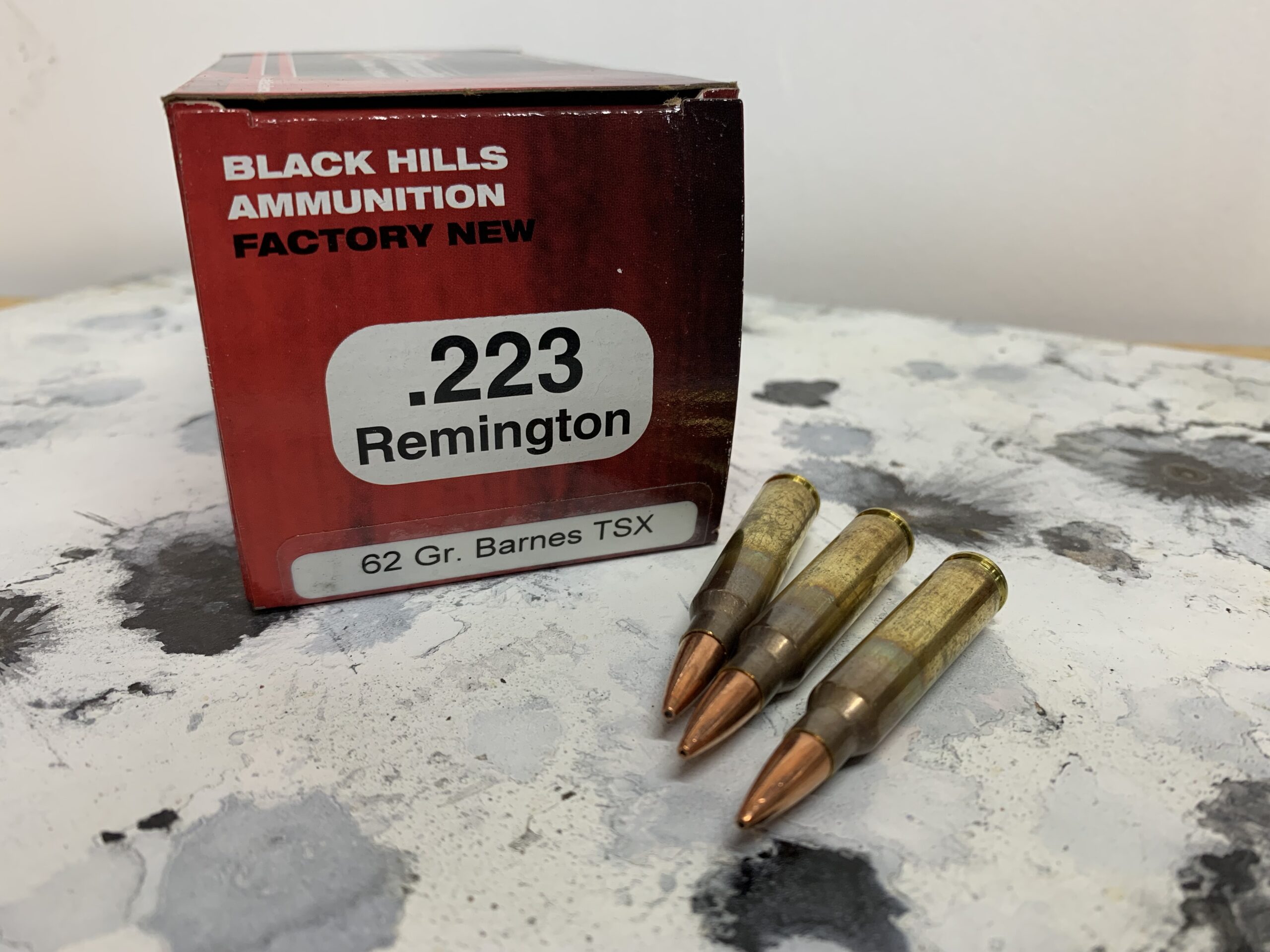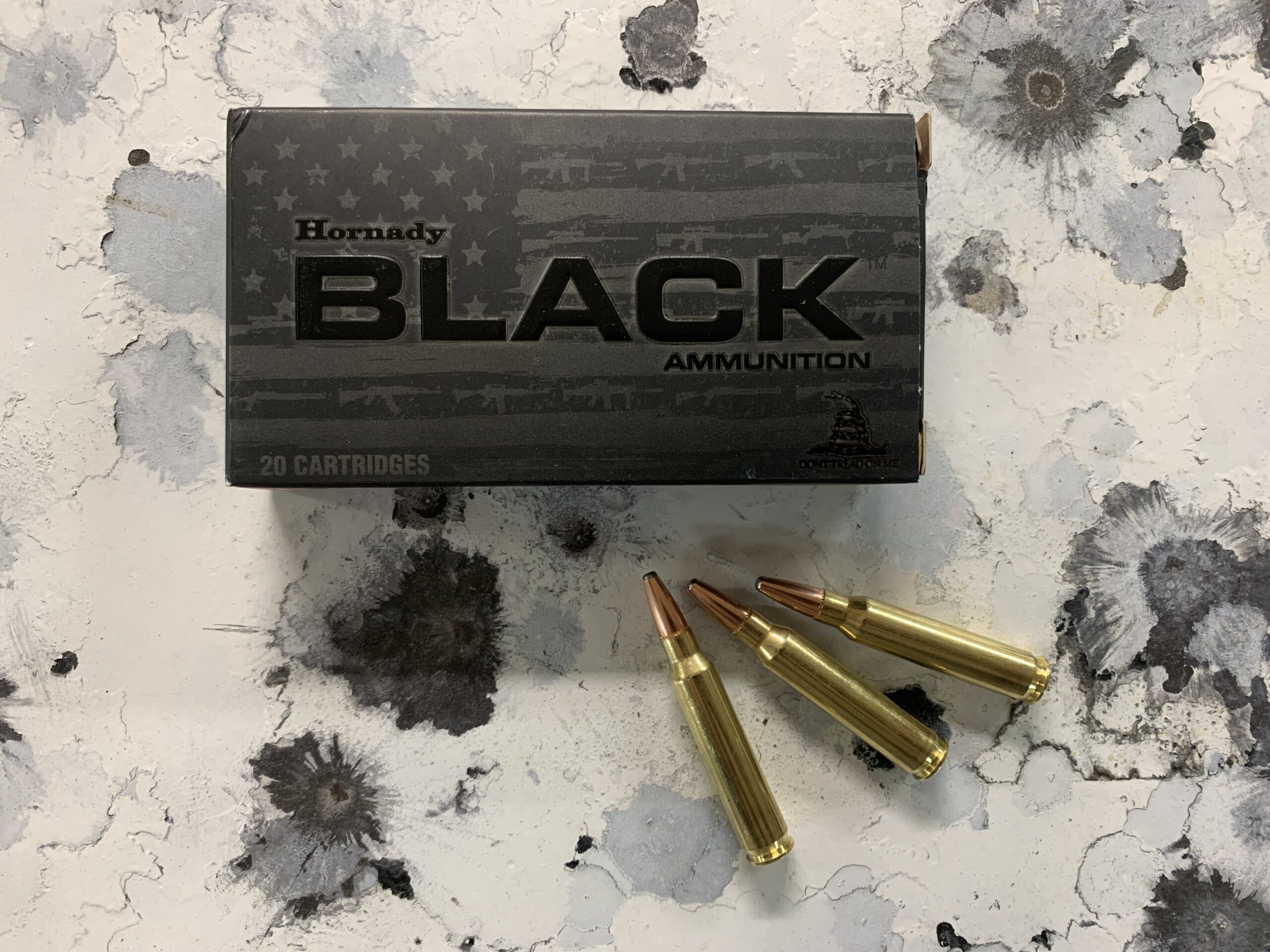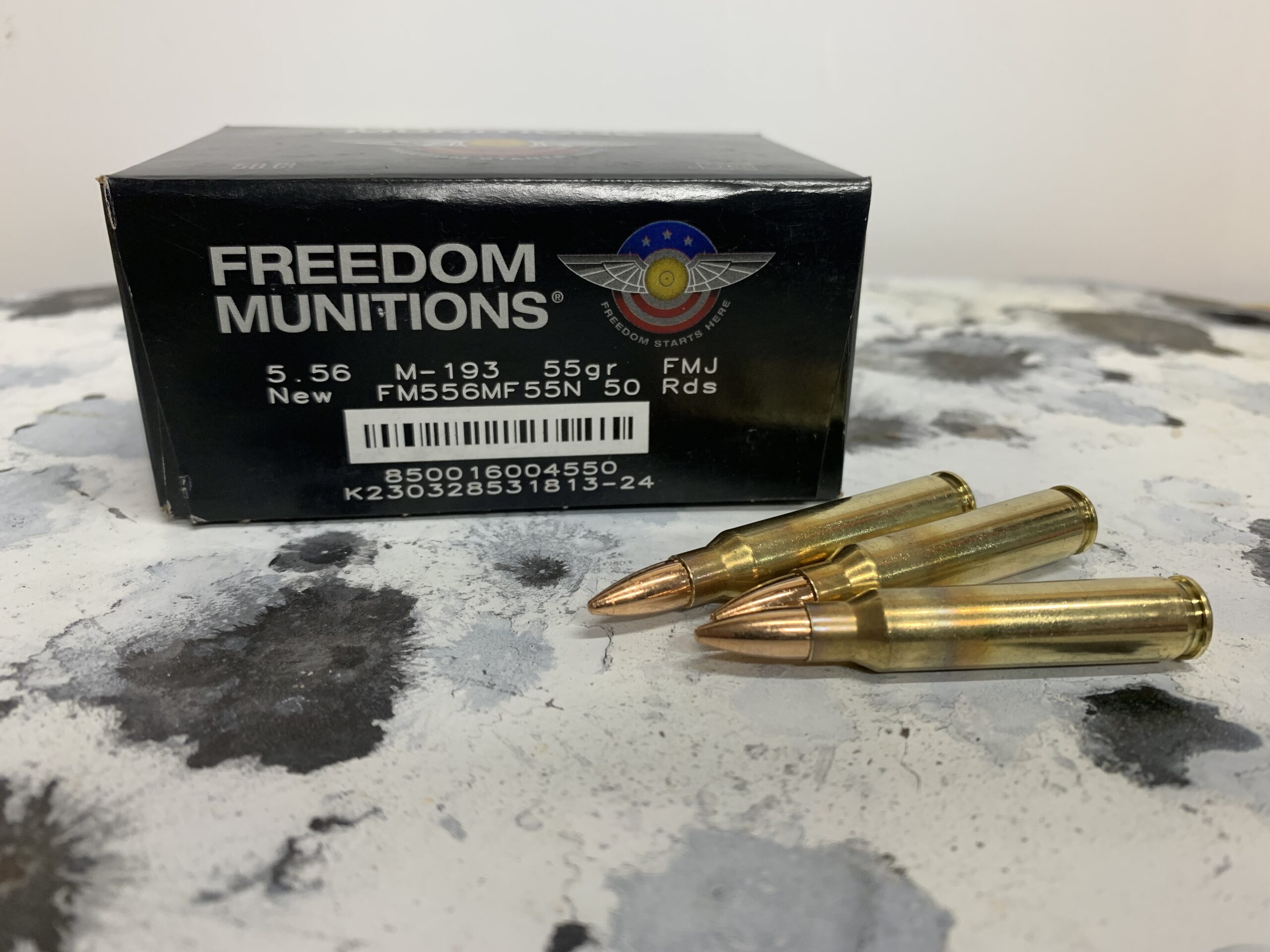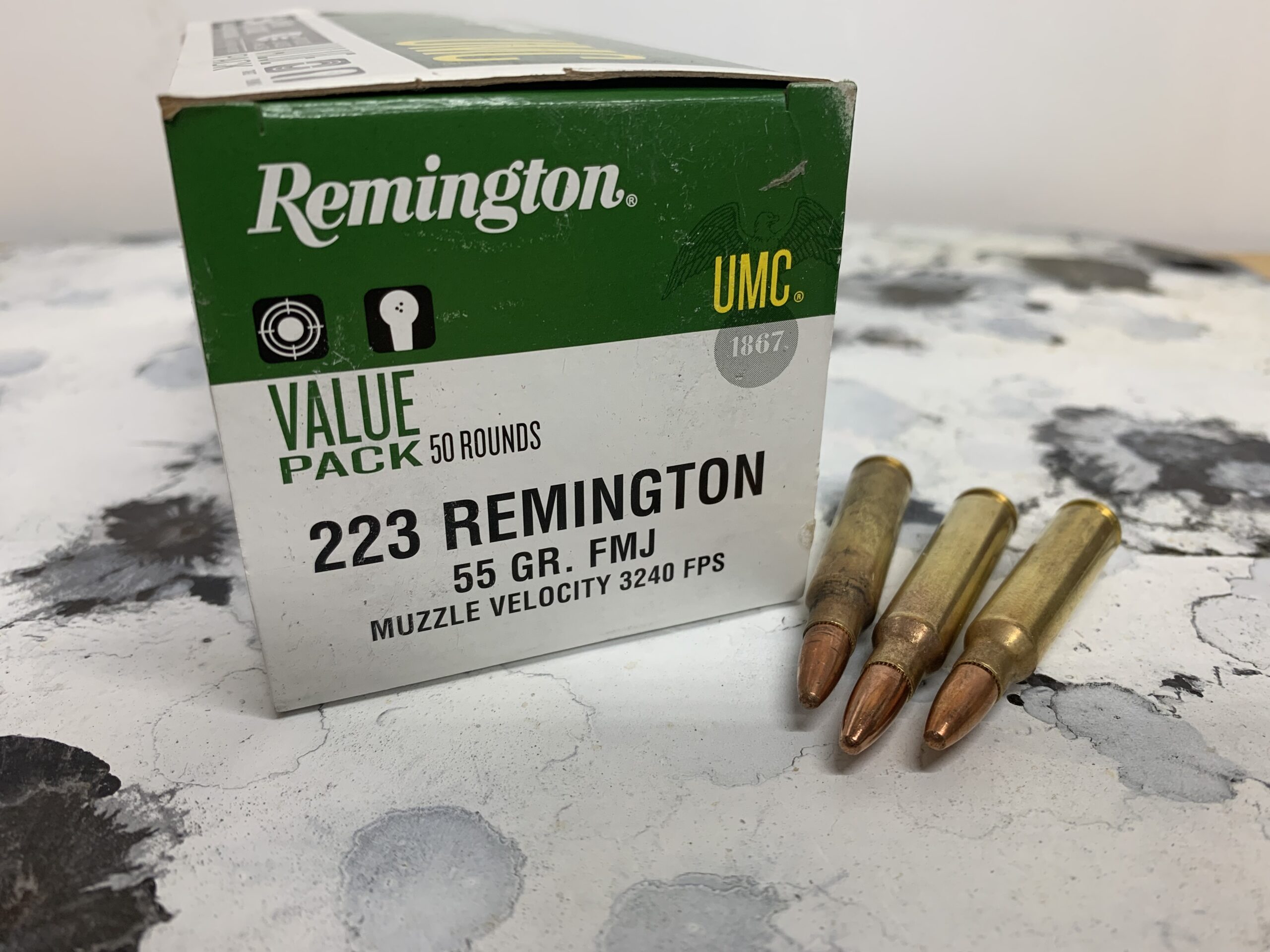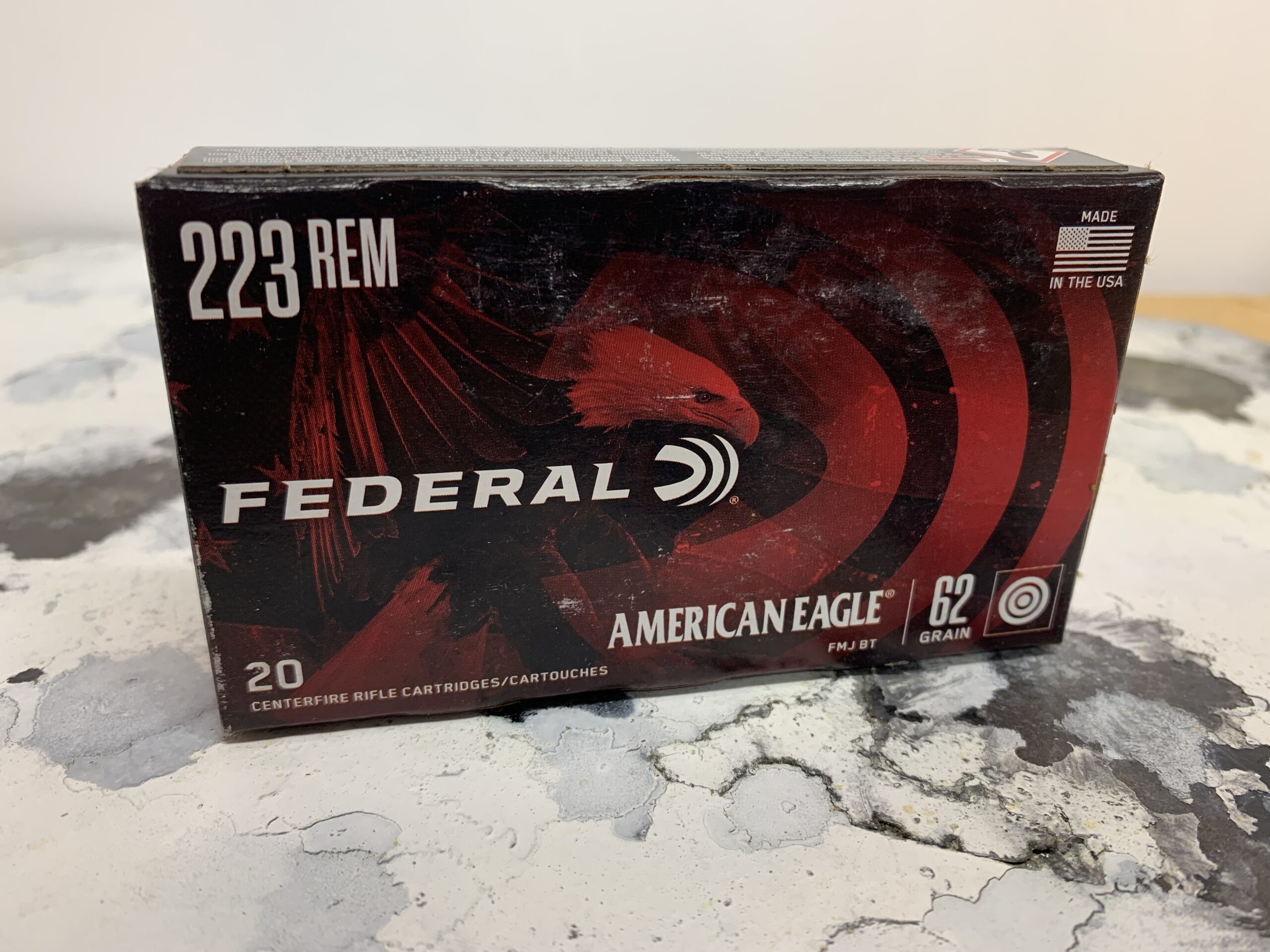We may earn revenue from the products available on this page and participate in affiliate programs. Learn More ›
Published Jun 2, 2023 12:01 PM
It’s arguable that the 5.56x45mm NATO and .223 Remington are the most popular centerfire cartridges, by volume, in the United States today. The best 5.56 ammo is accurate and can fill multiple roles. It also depends on your application. A precision match load might be best for you, or maybe just dependable, cheap 5.56 ammo. Among centerfire cartridges, it dominates as the plinker-in-chief, and has been our standard military issue cartridge for decades. But it also excels in competition, hunting, training, and self defense applications. In-fact, there may not be a more generally useful cartridge on the books or in our gun cabinets.
Although the 5.56mm NATO and the .223 Remington are slightly different cartridges—more on that later—both are ubiquitously referred to as 5.56. Hell, I do it myself. That’s why you’ll see so many .223 Remington loads in this test—and they’ll be referred to as 5.56 ammo. Try not to have a stroke. There is an excellent variety of 5.56 ammo available, which makes testing and determining the best 5.56 ammo a gargantuan task. I recorded over 500 5-shot groups from six rifles to see just how all this ammo would perform.
This will be a living document, with additional samples and data folded in down the road. This test of 23 different 5.56mm NATO and .223 Remington loads is an excellent starting point for selecting ammunition for a variety of applications, and it represents the general field well.
Match Ammo
Hunting and Defensive Ammo
Range and Practice
5.56 vs. .223 Remington: Are They Interchangeable?
If you’re an astute stickler for details, you’ve already noted that there is indeed a difference between the 5.56X45mm NATO cartridge and the .223 Remington. Although both cartridges are derivatives of the .222 Remington and have the same external dimensions, there are a couple key differences.
A lot has been written on those differences in chamber design and pressures, but conventional lore boils down to one point: when used in some .223 chambers, the 5.56mm NATO cartridge can cause pressure that exceeds SAAMI specifications.
Because of the commonly-exercised interchangeable use of the 5.56mm NATO and .223 Remington cartridges, some barrel manufacturers are now chambering in .223 Wylde, which is designed to be a cross-compatible chamber cut.
Chary individuals will tell you that it’s safe to shoot .223 Remington ammo in a 5.56mm NATO chamber, but it’s not safe to shoot 5.56mm NATO ammo in a .223 Remington chamber. Generally, this is bunk. If you’re trying a new 5.56mm NATO load in your .223 chamber, check for pressure signs, sure, but in a modern rifle, you’re not likely to encounter any issues. I’ve fired a tremendous amount of military M855 ball and other 5.56mm NATO through regular old .223 chambers without so much as a flattened primer—including in this test. Pay attention, but proceed.
What do Twist Rates Mean for Selecting the Best 5.56 Ammo?
The twist rate of your barrel can exclude certain ammunition based on bullet weight. Across the spectrum of 5.56mm NATO and .223 Remington rifles, you’ll see twist rates from 1:14 (1 twist in 14 inches of barrel length) to 1:7.
Slower twist rates might be great for 40-, 50-, and 55-grain bullets, but won’t stabilize heavier bullets. An example of this is one of the rifles I used to supplement this test. It has a 1:9 twist Kreiger match barrel that will shoot lights-out with bullets up to 70 grains. It will not, however, shoot heavier 75-, 77-, or 80-grain bullets accurately.
The most common contemporary twist rates for 5.56mm NATO and .223 Remington barrels are 1:7 and 1:8. A 1:8 twist barrel is capable of stabilizing any standard factory ammunition, including the popular 77-grain Sierra Matchking. As demonstrated by the service rifle that won me a distinguished rifleman badge many years ago, it’ll also shoot the ultra-long 80-grain Sierra Matchkings—although the 80- and 90-grain VLD match bullets are too long to fit in a standard magazine and must be single-loaded for an AR-type rifle. The run-of-the-mill mil-spec AR-15 barrel will have a twist rate of 1:7, making it capable of stabilizing any of the best 5.56 ammo you can find.
How We Tested the Best 5.56 Ammo
The Outdoor Life gun team takes pride in exercising a thorough and industry-leading protocol when testing guns and ammunition. Because a few groups through one or two rifles is too small of a sample size to tell you anything really useful, I went the extra mile. I requested, gathered, and bought all the ammunition I could reasonably manage, in a variety of styles to represent competition, recreational, hunting, and defensive applications.
Test Rifles
I selected my test rifles to mirror what many shooters are using, and to provide a spectrum of barrel lengths, twist rates, and rifle styles. In total, I used six different rifles for this test. I fired each load through four of the rifles, and used two of them to gather supplementary data.
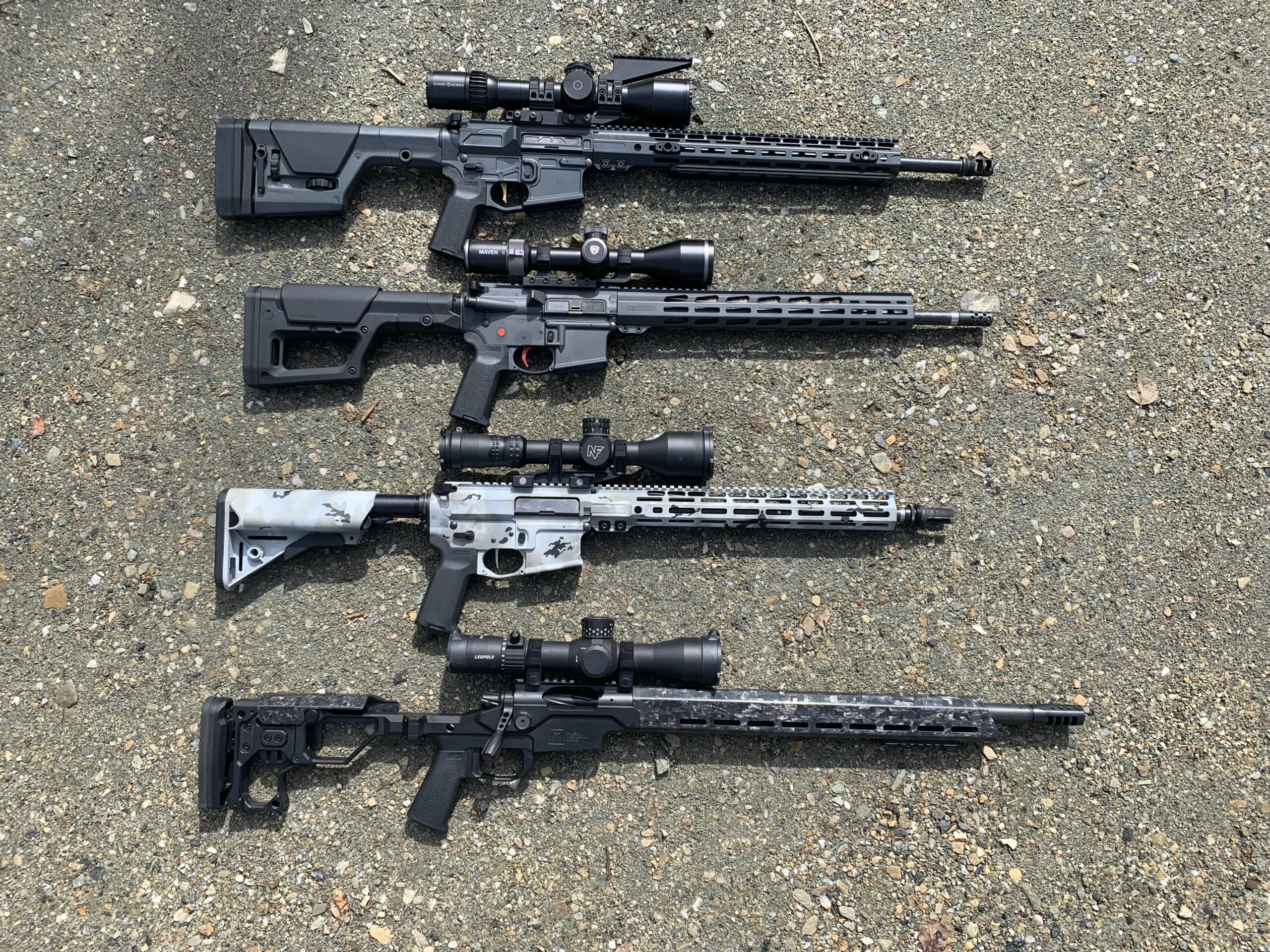
Ruger AR-556 MPR Proof Barrel
- .223 Wylde
- 20-inch Proof carbon-fiber barrel
- 1:8 twist
Lone Star Armory TX15 Designated Marksman Light
- .223 Remington (KWC chamber)
- 20-inch Bartlein steel barrel
- 1:7 twist
Lone Star Armory TX15 Multi-Purpose Carbine
- .223 Wylde
- 16-inch Boss carbon-fiber barrel
- 1:7 twist
Christensen Arms Modern Precision Rifle
- .223 Remington
- 20-inch carbon-fiber barrel
- 1:8 twist
Lone Star Armory TX4 Carbine (older)
- .223 Remington
- 16-inch Kreiger stainless-steel barrel
- 1:9 twist
- Was not used with bullets heavier than 69 grains
DIY Mil-Spec Build
- 5.56mm NATO
- 16-inch M4-profile barrel
- 1:7 twist
- Used as a reference point for several common loads
Testing Protocol
The most important thing we want to know about the best 5.56 ammo is how it shoots, especially in a variety of rifles. My basic testing protocol was to fire at least two, but ideally four or five recorded groups from 100 yards with each type of ammunition, through each of the first four primary rifles. My total group volume per load varied a bit due to the ammo I had available and consistency of performance. I typically fired fewer groups with ball ammo that exhibited average performance and consistency than I did with match ammo or ammo that displayed above-average accuracy. Shooting extra groups gave a fine-tuned average for the more accurate loads, but for mediocre-shooting loads, it was unlikely to move the needle much.
I also fired groups with ammunition that used 69-grain and lighter bullets through the 1:9-twist Kreiger-barreled TX4 in addition to the four primary rifles. I recorded groups with some standard 5.56 ammo like the MK 262 MOD 1-C and M855 through the mil-spec DIY rifle to use as a reference point as well.
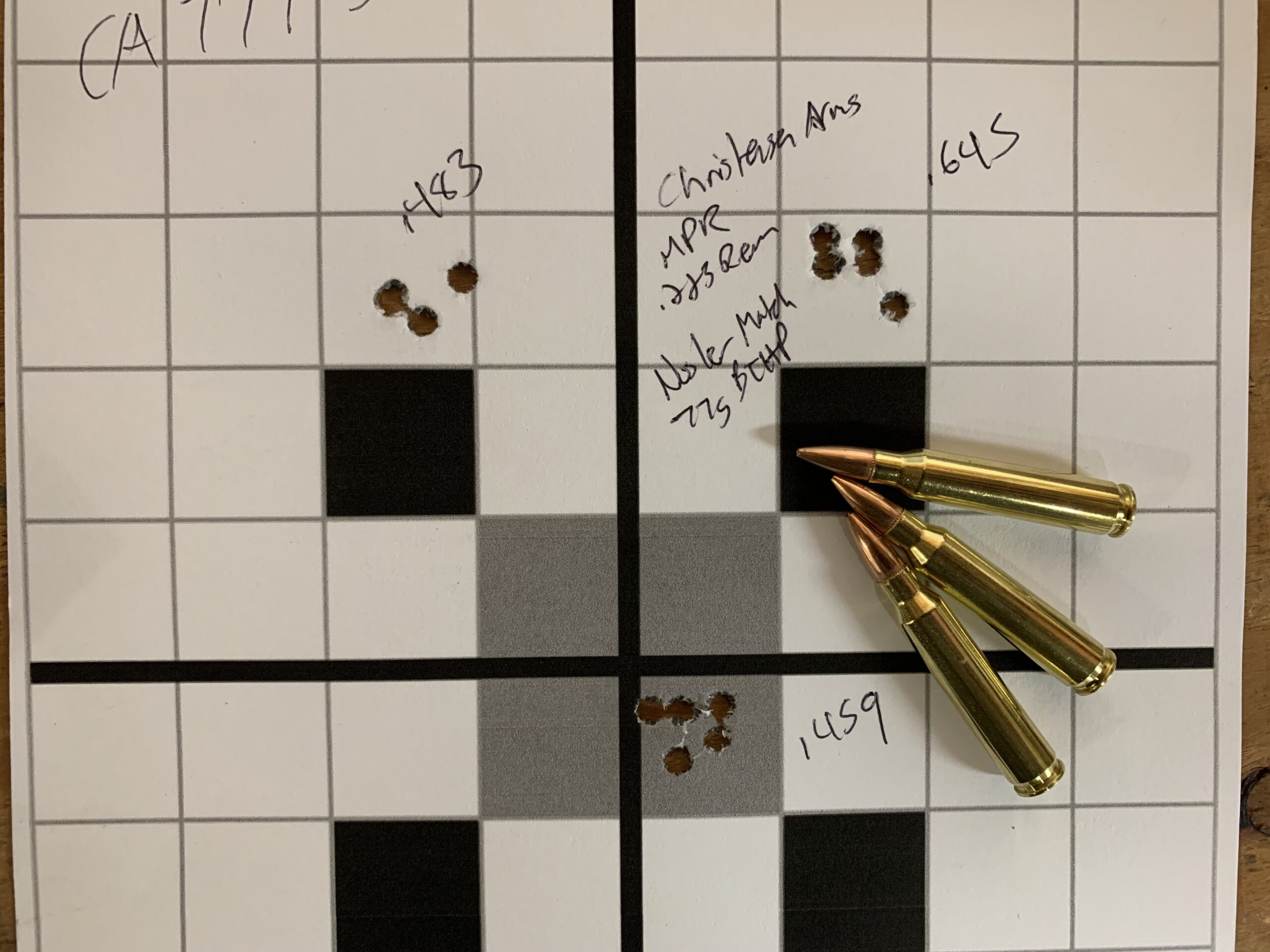
I fired five-shot groups, without pausing between shots in a string. Between groups, I rotated rifles so that barrels could cool. At the end of testing, I fired 10-shot, continuous-string groups at 300 yards with some of the most accurate rifle and load combinations to see how well they would hold on longer strings at longer distances.
Best 5.56 Ammo: Reviews and Recommendations
This test was one of tight margins. Many of the loads I tested were neck-and-neck, but here are my favorites.
Best Overall: Black Hills Ammo 5.56mm NATO MK 262 MOD 1-C
Key Features
- 77-grain Sierra Matchking w/cannelure
- Annealed brass
- Crimped primer
- Velocity: 2,750 feet per second
- 100-yard 5-shot accuracy average: .953 inches (43 groups)
- Most accurate rifle and average group size: LSA TX15 DML, .814 inches
- 300-yard 10-shot accuracy average: 2.827 inches
- Cost per round: $1.25
Pros
- Excellent accuracy
- Versatile load
- Quality components
- Good for long-range
Cons
- Limited availability
- Requires 1:8 twist barrel
One of the best all-around 5.56 loads is a true 5.56mm NATO cartridge—the MK 262. The load has its origins in special operations and was designed for better accuracy and downrange performance than the standard-issue M855 ball. It’s designed as AR 15 ammo and uses a 77-grain Sierra Matchking bullet, which is a juggernaught of across-the-course competition, but this version which is like the military-issued MK262 features a canellure on the bullet to accept a crimp. The standard 77-grain SMK does not.
Unsurprisingly, the MK262 MOD 1-C ammo was accurate across all of the test rifles, and the heavy bullet holds onto that accuracy downrange. In my service rifle days, 77-grain SMK handloads were the ticket at 200- and 300-yards, and could even shoot well at 600 yards if I was short on 80-grain VLD’s. This ammo shoots well in both carbines and longer-barreled rifles, and I saw no pressure signs when shooting it through the Christensen MPR chambered in .223 Remington.
Best Value: Freedom Munitions .223 69-grain HPBT Match
Key Features
- 69-grain BTHP
- .223 Remington
- Velocity: 2,850 feet per second
- 100-yard 5-shot accuracy average: .891 inches (28 groups)
- Most accurate rifle and average group size: LSA TX4, .657 inches
- 300-yard 10-shot accuracy average: 3.109 inches
- Cost per round: $0.70
Pros
- Excellent accuracy
- Great for competition or defense
- Bargain-priced
Cons
- Not carried by most retailers
Freedom Munitions brought a ray of sunshine to our 2023 gun test when they sent us a couple cases of their very affordable match 6.5 Creedmoor ammunition. It was so accurate and consistent that I had to try some here too. Similarly, this 69-grain Match BTHP load was a stellar performer. It ranked third out of the 23 tested loads in accuracy, and was only short of the top spot by .044 inches in average group size. That’s arguably within a cumulative margin of error of my own measuring of all those groups.
This load shot well in just about every rifle and exceptional in some. It averaged .658 inch groups in the 1:9-twist TX4, and even held a 1.044-inch average in the DIY mil-spec AR carbine. Although the performance was stellar, it’s even more impressive when considering how affordable the ammo is. It outshot ammo like Federal’s Gold Medal Match—and rings up at half the cost.
Most Accurate: Nosler Match Grade .223 77-grain Custom Competition BTHP
Key Features
- 77-grain BTHP
- .223 Remington
- Velocity: 2,600 feet per second
- 100-yard 5-shot accuracy average: .847 inches (24 groups)
- Most accurate rifle and average group size: Christensen Arms MPR, .687 inches
- 300-yard 10-shot accuracy average: 2.65 inches
- Cost per round: $1.86
Pros
- Best overall accuracy
- Great for competition
- Perfect for service rifle competition or precision rifle training
Cons
The Nosler 77-grain custom competition averaged out as the most accurate 5.56 ammo in the test. It averaged a screaming .687 inches in the Christensen MPR, and even held under an inch in the 16-inch LSA TX15 carbine. At 300 yards out of the Christensen rifle, it held at .84 MOA for non-stop strings of 10 shots—an impressive feat.
As dominant and popular as the Sierra Matchking bullets are among shooters and ammunition manufacturers, Nosler’s match ammo brings the goods. In this case, it out-shines all others. It’s a load that requires a 1:8 or tighter twist barrel, but like the MK 262, it would be excellent defensive carbine ammo and would be a solid option for varmints.
Best for Larpers: Lake City 5.56mm NATO M855 Ball, 62-grain Green Tip
Key Features
- 62-grain steel-core FMJ
- 5.56mm NATO
- Velocity: 3,020 feet per second
- 100-yard 5-shot accuracy average: 1.877 inches (26 groups)
- Most accurate rifle and average group size: LSA TX4, 1.047 inches
- Cost per round: $0.65
Pros
- Generally low cost
- Standard military issue
- Quality brass
Cons
- Not compatible with steel targets
M855 ball, also referred to as “5.56 green tip ammo,” is the quintessential 5.56 ammo. It’s a 62-grain FMJ bullet with a steel core and characteristic green painted tip. M855 is standard issue. Its accuracy is mediocre, but a good benchmark. It averaged group sizes of about an inch at best and printed several groups over 3 inches. In my mil-spec 16-inch barrel, it averaged 2.862 inches for 5 shots at 100 yards.
There are frankly better options for both practice, hunting, defensive, and duty ammo in this test, but because it’s standard-issue, M855 5.56 green tip ammo is a benchmark that needs to be included. The steel-core bullet will damage your expensive AR500 targets and cause potentially dangerous ricochet, so stick to regular FMJ or frangible. If you’re one of many passionate shooters who want everything to be true-to-issue, you need some green tip AR 15 ammo in your foot locker.
Best for Varmints: Freedom Munitions .223 55-grain V-Max
Key Features
- 55-grain Hornady V-Max
- .223 Remington
- Velocity: 3,160 feet per second
- 100-yard 5-shot accuracy average: .978 inches (28 groups)
- Most accurate rifle and average group size: LSA TX15 DML, .772 inches
- Cost per round: $0.56
Pros
- Excellent accuracy
- Time-proven varmint bullet
- Bargain-priced
Cons
- Not carried by most retailers
This was the most accurate 5.56 ammo for predators and varmints, and also the most affordable. Like the Freedom Munitions 69-grain match load, this ammo is accurate in a variety of guns. Between the 16-inch TX4, the TX15 carbine, and the TX15 DML, I recorded 14 groups. Only one of those groups measured more than an inch. It averaged just over an inch in the Ruger and Christensen.
The accuracy was great, but again, the price of the Freedom Munitions ammo is what really grabbed my attention. It’s half the price of many other comparable varmint loads, and the 55-grain Hornady V-Max is a proven varmint buster that I’ve killed many coyotes with. It would serve as a great home defense round too, since the rapidly-expanding bullet won’t over-penetrate.
Best for Deer: Remington Premier .223 55-grain Accutip
Key Features
- 55-grain Accutip
- .223 Remington
- Velocity: 3,240 feet per second
- 100-yard 5-shot accuracy average: 1.167 inches (30 groups)
- Most accurate rifle and average group size: Christensen MPR, .848 inches
- Cost per round: $2.00
Pros
- Good accuracy
- Mechanically fastened jacket for weight retention on medium-sized game
- Excellent expansion
Cons
- Not as durable as monolithic bullets
An excellent all-around hunting bullet, and great option for game like deer is the 55-grain Accutip from Remington. It’s a polymer-tipped bullet that has a tapered jacket that’s mechanically fastened to the core. This allows rapid initial expansion, but good weight retention and penetration. It’s going to require more careful shot placement than monolithic bullets like the Nosler E-Tip and Barnes TSX, but it’s certainly potent enough to get the job done on deer.
Best Lead-Free Ammo: Nosler .223 55-grain Expansion Tip
Key Features
- 55-grain Nosler Expansion Tip monolithic bullet
- .223 Remington
- Velocity: 3,100 feet per second
- 100-yard 5-shot accuracy average: 1.382 inches (21 groups)
- Most accurate rifle and average group size: LSA TX15 DML, .825 inches
- Cost per round: $2.15
Pros
- Good accuracy
- Lead free
- Balanced expansion and penetration
- Excellent weight retention
Cons
- Accuracy can vary rifle-to-rifle
Lead-free bullet technology has improved dramatically in the past 20 years, and there are several great options on the market for hunters now. Nosler’s Expansion Tip is a polymer-tipped all-copper bullet that’s designed for immediate expansion, but to maximize weight retention too. It’s an excellent bullet for predators like coyotes, but also larger game like deer. Overall accuracy was good, but it seemed that this ammo shot either very well or very mediocre in rifles, with groups ranging from the upper 1-inch range, to consistently sub-inch, depending on the rifle. Although the BHA Barnes TSX load averaged a hair better in accuracy, its availability is limited right now, so the E-Tip gets the nod.
Best Ball Ammo: Winchester USA Target .223 55-grain FMJ
Key Features
- 55-grain FMJ
- .223 Remington
- Velocity: 3,240 feet per second
- 100-yard 5-shot accuracy average: 1.836 inches (13 groups)
- Most accurate rifle and average group size: LSA TX4, 1.346 inches
- Cost per round: $0.65
Pros
- Good for practice and plinking
- Works with any twist rate
- Readily available
Cons
- Only ideal for practice and target shooting
Ball ammo is the bread and butter for scores of 5.56 and .223 shooters. It’s the most affordable option for 5.56 bulk ammo if you’re into high-volume practice and plinking. Ball ammo is simple and straightforward, and most of it is pretty consistent. Most of the ball ammo I tested averaged 1.5- to 2-inch groups at 100 yards, and this Winchester 55-grain FMJ was right at the top of the pack. It was edged out in accuracy by one other load, but because of its widespread availability, low cost, and compatibility with steel and self-healing targets, it’s one of the best options.
Best for Shooting Steel: Freedom Munitions .223 42-grain Zinc-core FMJ
Key Features
- 42-grain zinc core FMJ
- .223 Remington
- Velocity: 3,500 feet per second
- 100-yard 5-shot accuracy average: 1.397 inches (19 groups)
- Most accurate rifle and average group size: Ruger AR-556 MPR Proof, 1.184 inches
- Cost per round: $0.47
Pros
- Lead free
- Works with any twist rate
- Great for steel targets
- Very affordable
Cons
- Only ideal for practice and target shooting
Standard steel rifle targets can be shot with most regular FMJ ammo, but it can sometimes shower the shooter and bystanders with spall fragments—tiny pieces of bullet and jacket material. Frangible ammunition is the most ideal option for shooting steel targets, especially at close range, and although this zinc-core FMJ ammo isn’t frangible, it is lead free and fragments nicely. When shooting high volume indoors or at closer range, it will reduce the amount of lead you’re exposed to.
This ammo isn’t just great for steel though, it’s one of the best 5.56 ammo ball loads I tested. It was the most accurate ball ammo, and one of the most affordable—though you’ll probably have to order it.
The Best 5.56 Ammo: More Match Ammo
They might not all be top dog, but this field of ammunition was full of strong contenders in their respective categories. Ammunition performance will naturally vary from rifle to rifle, and one of these might also be best one for you. Here are some other excellent loads in the match ammo category.
Black Hills Ammo .223 69-grain Sierra Matchking
Key Features
- 69-grain Sierra Matchking
- .223 Remington
- Velocity: 2,850 feet per second
- 100-yard 5-shot accuracy average: .963 inches (18 groups)
- Most accurate rifle and average group size: LSA TX15 MPC .704 inches
- Cost per round: $1.11
Pros
- Great accuracy
- Great for competition and practice
- Quality components
Cons
The only downside to Black Hills Ammo’s 69-grain match load is that it’s hard to find these days. I have some squirreled away, and eventually it will come back. As in other loads, the Sierra Matchking is a solid performer, and the 69-grain bullet is ideal for the 200-yard line.
Remington Premier Match .223 77-grain Sierra Matchking
Key Features
- 77-grain Sierra Matchking
- .223 Remington
- Velocity: 2,790 feet per second
- 100-yard 5-shot accuracy average: .886 inches (20 groups)
- Most accurate rifle and average group size: Christensen Arms MPR, .681 inches
- 300-yard 10-shot accuracy average: 2.321 inches
- Cost per round: $1.65
Pros
- Exceptional accuracy
- Great for competition
- Good value
Cons
- Won’t shoot well in slow-twist barrels
Big Green ammo has come back strong since the last big Remington bankruptcy debacle, and they’ve been pumping out solid-performing ammo at a time when we really need it. I want every ammo and rifle to succeed—almost to a fault—and it was pleasing to see this Premier Match load shoot so well. It fires 77-grain Sierra Matchking bullets and was the second most accurate load in this test—and that was only by a few thousandths of an inch. The Christensen MPR took a shine to this load, and with it, I didn’t fire a single group over one minute of angle. Even pounding out 10-shot groups at 300 yards, the load was decisively sub-MOA.
Remington Premier Match .223 69-grain Sierra Matchking
Key Features
- 69-grain Sierra Matchking
- .223 Remington
- Velocity: 3,000 feet per second
- 100-yard 5-shot accuracy average: 1.332 inches (21 groups)
- Most accurate rifle and average group size: LSA TX15 DML, 1.054 inches
- Cost per round: $1.75
Pros
- Proven Matchking bullets
- Good for competition or practice
- Good value
Cons
- Accuracy wasn’t as good as 77-grain load
This 69-grain match load is right at home in 1:9 twist barrels. Accuracy of this load wasn’t stellar, but it was good, and consistent across all the rifles tested. For service rifle competition, where the X-ring is approximately one minute of angle, this would be a good option at the 200- and 300-yard lines.
Federal Gold Medal Match .223 69-grain Sierra Matchking
Key Features
- 69-grain Sierra Matchking
- .223 Remington
- Velocity: 2,950 feet per second
- 100-yard 5-shot accuracy average: 1.085 inches (18 groups)
- Most accurate rifle and average group size: LSA TX4, .964 inches
- Cost per round: $1.75
Pros
- Proven Matchking bullets
- Great accuracy
- Good for competition or practice
- Great standard load for accuracy evaluation
Cons
- More expensive than some better-performing match ammo in the test.
Federal Gold Medal Match needs no introduction, and it’s a standard ammunition that we often use when evaluating accuracy of rifles and comparing other ammo. This load also features the popular 69-grain Sierra Matchking bullet, and sends it accurately. So that we don’t get lost in just how accurate much of this ammo is, any load that averages an inch at 100 yards with five-shot groups across multiple rifles is excellent.
Hornady Superformance .223 75-grain BTHP Match
Key Features
- 75-grain Hornady BTHP
- .223 Remington
- Velocity: 2,930 feet per second
- 100-yard 5-shot accuracy average: 1.257 inches (18 groups)
- Most accurate rifle and average group size: LSA TX15 MPC, .728 inches
- Cost per round: $1.40
Pros
- Good accuracy
- Competitive price
- Good for competition or practice
Cons
- Less consistent accuracy than some other loads
Hornady’s Superformance line of ammo focuses on squeezing maximum velocity out of its chamberings, and that’s demonstrated with the 2,930 fps speed of the 75-grain BTHP bullet. It’s a more affordable load than some others, and proved to have good accuracy—although it wasn’t consistent rifle to rifle. Most rifles averaged just over an inch at 100 yards, but groups from the 16-inch TX15 MPC carbine averaged .728-inch groups.
Winchester Match .223 69-grain Sierra Matchking
Key Features
- 69-grain Sierra Matchking
- .223 Remington
- Velocity: 3,060 feet per second
- 100-yard 5-shot accuracy average: .938 inches (28 groups)
- Most accurate rifle and average group size: LSA TX15 DML, .767 inches
- 300-yards 10-shot accuracy average: 4.1 inches
- Cost per round: $1.40
Pros
- Outstanding accuracy
- Great for 200 and 300 yards
- Good for competition or practice
Cons
- More wind drift at 300 yards than 77-grain bullets
Winchester’s 69-grain Matchking loads produced some of the tightest 100-yard groupings in the test, including the tightest overall group of .298 inches. It posted a stellar average groups size, and would be a fantastic go-to. It uses the venerable Sierra Matchking bullet, but won’t buck the wind as well as 77-grain bullets at distances beyond 200 yards.
The Best 5.56 Ammo for Hunting and Defense
The field for quality 5.56 ammo for hunting is just as deep as it is in the match category. A testament to the 5.56mm NATO and .223 Remington’s versatility, many of these hunting loads would be excellent at pulling double-duty as self defense or home defense loads because their rapid expansion prevents overpenetration.
Black Hills Ammo .223 62-grain Barnes TSX
Key Features
- 62-grain Barnes TSX
- .223 Remington
- Velocity: 3,025 feet per second
- 100-yard 5-shot accuracy average: 1.292 inches (14 groups)
- Most accurate rifle and average group size: LSA TX15 DML, .883 inches
- Cost per round: $1.60
Pros
- Good accuracy
- Lead free
- Great terminal performance
- Good for varmints or medium-sized game
Cons
The Barnes TSX is one of the best hunting bullets you can choose in 5.56 or .223 because it expands rapidly, but maintains its weight. This load from Black HIlls Ammo uses the 62-grain TSX, and barely edged out the Nosler E-Tip in accuracy, but like several of BHA’s .223 loads, it’s tough to get right now.
Hornady Black 5.56mm NATO 75-grain Interlock
Key Features
- 75-grain Hornady Interlock
- 5.56mm NATO
- Velocity: 3,025 feet per second
- 100-yard 5-shot accuracy average: 1.778 inches (12 groups)
- Most accurate rifle and average group size: LSA TX15 DML, 1.342 inches
- Cost per round: $1.25
Pros
- Good bullet for medium-sized game
- Mechanically fastened core and jacket
- Affordable
Cons
- Mediocre accuracy compared to competitors
Hornady’s Interlock bullet is a great, affordable option for a variety of hunting calibers. It has a soft lead point and mechanically fastened core to allow for good expansion, but high weight retention. This would be a good option for hogs or deer-sized game.
Nosler .223 55-grain Ballistic Tip Varmint
Key Features
- 55-grain Ballistic Tip
- .223 Remington
- Velocity: 3,100 feet per second
- 100-yard 5-shot accuracy average: .991 inches (24 groups)
- Most accurate rifle and average group size: Christensen Arms MPR, .731 inches
- Cost per round: $1.50
Pros
- Great accuracy
- Excellent for coyotes and varmints
- Great option for a defensive carbine
Cons
- 55-grain bullet not great beyond 300-400 yards
This load from Nosler was within a few thousandths of the most accurate varmint load tested, and comparable to the performance of other 55-grain ballistic tips like the Hornady V-Max. It was edged out in this test because of the exceptional value of the Freedom Munitions V-Max load. This would be excellent coyote medicine, and could easily double as a great option for a defensive rifle from which you don’t want excessive penetration.
Winchester Varmint X .223 40-grain Polymer Tip
Key Features
- 40-grain Varmint X bullet
- .223 Remington
- Velocity: 3,600 feet per second
- 100-yard 5-shot accuracy average: 1.083 inches (21 groups)
- Most accurate rifle and average group size: Christensen Arms MPR, .795 inches
- Cost per round: $1.10
Pros
- Great accuracy
- Excellent for coyotes and varmints
- Compatible with slow-twist, older rifles
Cons
- 40-grain bullet not great for long-range shots
This lightweight, high-velocity load surprised me with its sub-MOA accuracy average. It shot well across the board for such a light bullet, but averaged a screaming .795 inches with the Christensen MPR. That would make a deadly coyote or groundhog combo. The polymer-tipped bullet is designed for rapid expansion and devastation on small critters.
Hornady Critical Defense .223 73-grain FTX
Key Features
- 73-grain Hornady FTX bullet
- .223 Remington
- Velocity: 2,790 feet per second
- 100-yard 5-shot accuracy average: 1.08 inches (18 groups)
- Most accurate rifle and average group size: LSA TX15 DML, .92 inches
- Cost per round: $1.55
Pros
- Good accuracy
- Nickel-plated, crimped cases
- Consistent expansion
- Limited penetration
Cons
- Not intended for long-range performance
Hornady’s Critical Defense line is designed with dependability and performance in mind. The FTX bullet doesn’t have the high ballistic coefficients that match bullets have, but its protected tip induces uniform expansion, and reduces overpenetration in this defensive load. I’m sure it would perform well on small and medium-sized game, and it shot well out of a variety of rifles.
Best 5.56 Ammo for the Range
The bulk of 5.56 ammo consumed is simple ball or FMJ, and its important to consider. As in all the other categories, there were some standouts among the range ammo in this test too.
Freedom Munitions 5.56mm NATO M193 55-grain FMJ
Key Features
- 55-grain FMJ bullet
- 5.56mm NATO
- Velocity: 3250 feet per second
- 100-yard 5-shot accuracy average: 1.928 inches (19 groups)
- Most accurate rifle and average group size: Christensen Arms MPR, 1.582 inches
- Cost per round: $.44
Pros
- Good accuracy
- Great for all-around practice
- Good for steel
Cons
- Not great for hunting or self-defense
Freedom Munitions brought another solid performer to the table with their 55-grain M193 load, which is meant to duplicate the original M193 55-grain 5.56mm NATO load that predated the M855 and was used in the M16. All-around, this is solid-performing cheap 5.56 ammo with good accuracy and reliability.
Remington UMC .223 55-grain FMJ
Key Features
- 55-grain FMJ bullet
- .223 Remington
- Velocity: 3,240 feet per second
- 100-yard 5-shot accuracy average: 2.104 inches (10 groups)
- Most accurate rifle, average group size: LSA TX4, 1.93 inches
- Cost per round: $.73
Pros
- Affordable
- Great for all-around practice
- Good for steel
Cons
- Not great for hunting or self-defense
Remington UMC’s FMJ is another pillar of shooting ranges across the country. It’s one of the most common and best cheap 5.56 ammo loads for practice that you’ll find. It uses a simple 55-grain FMJ bullet that is fine to shoot with just about any twist rate. It’s useful for both plinking and dedicated practice.
American Eagle .223 62-grain FMJ
Key Features
- 62-grain FMJ bullet
- .223 Remington
- Velocity: 3,020 feet per second
- 100-yard 5-shot accuracy average: 2.563 inches (12 groups)
- Most accurate rifle and average group size: LSA TX4, 1.967 inches
- Cost per round: $.90
Pros
- Similar to M855 ballistics
- Great for practice
- Good for steel
Cons
- Not great for hunting or self-defense
Federal’s American Eagle line has been a go-to practice and 5.56 bulk ammo since I had my dad buying it for me (becaues I wasn’t old enough). It’s not the most accurate ball ammo I tested, but is generally good quality and reliable. The 62-grain FMJ load closely mimics the ballistics of the M855 Green Tip ammo, but doesn’t have the steel core that will damage steel targets.
FAQ
What is 5.56 ammo used for?
There are many applications for 5.56 ammo, including competition, recreational shooting, hunting, and self defense. It’s most commonly used in AR15-type rifles.
What is the most popular AR-15 ammo?
The most popular AR-15 ammo is ball or full metal jacket practice and plinking ammo like the Winchester USA Target .223 55-grain FMJ load. It’s affordable and great for practice, but not great for hunting or self-defense.
What is the best 5.56 round for deer hunting?
The best 5.56 round for deer hunting is one that uses an expanding bullet that will retain good mass to aid with penetration. The Remington Premier .223 55-grain Accutip is one of our favorites from this test.
What is a green tip 5.56 round?
A green tip 5.56 round is a Lake City 5.56mm NATO M855 Ball cartridge. It has a 62-grain FMJ bullet with a steel core and a painted green tip. This has been the standard-issue 5.56mm NATO ammo for the US military for decades.
Is green tip 5.56 ammo good for hunting?
No, 5.56 green tip ammo is not generally good for hunting. It can work well on small game, but it uses a non-expanding bullet that performs poorly compared to hunting-specific ammunition.
Is .223 and 5.56 ammo the same?
Externally, both 5.56 ammo and .223 are the same, and they fire the same bullets. However, 5.56 ammo is sometimes loaded to higher pressures than SAAMI spec .223. You can fire both safely through a 5.56mm NATO or .223 Wylde chamber, and most 5.56 ammo will work just fine in modern .223-chambered rifles.
Read Next: Best Long Range Calibers
Final Thoughts
Testing the best 5.56 ammo is a wormhole that I likely won’t soon escape. We’re still working our way out of an ammo shortage, and this isn’t the first. The ammo shortage of the late 2000’s caught many off guard, and common ammunition for cartridges like 5.56mm NATO, .223 Remington, and .308 Winchester were all but nonexistent. In response, manufacturers were better prepared this time—at least for these cartridges. As a result, we have a wide variety of 5.56 ammo available. Testing these 23 loads was an overwhelming but pleasurable effort, and I’ll eagerly keep testing and adding products to the lineup. If there are any solid conclusions to be reached from this testing, it’s that the best 5.56 ammo is extremely accurate, affordable, and versatile.

